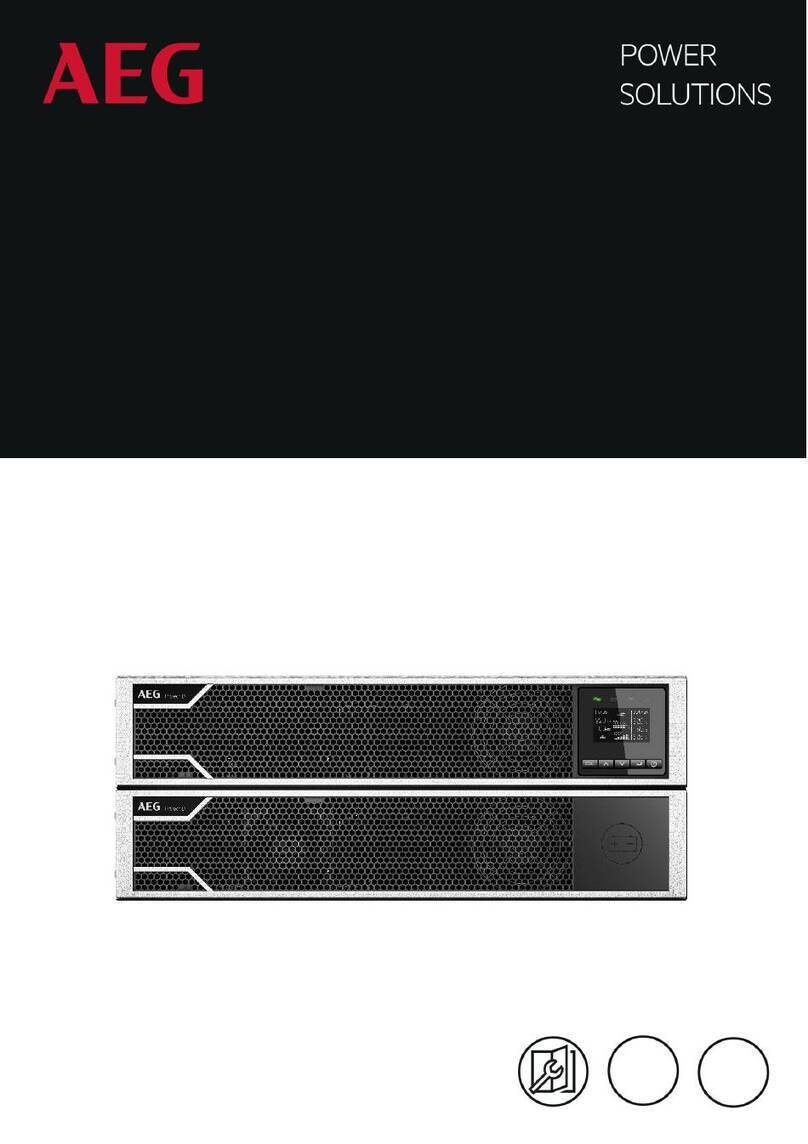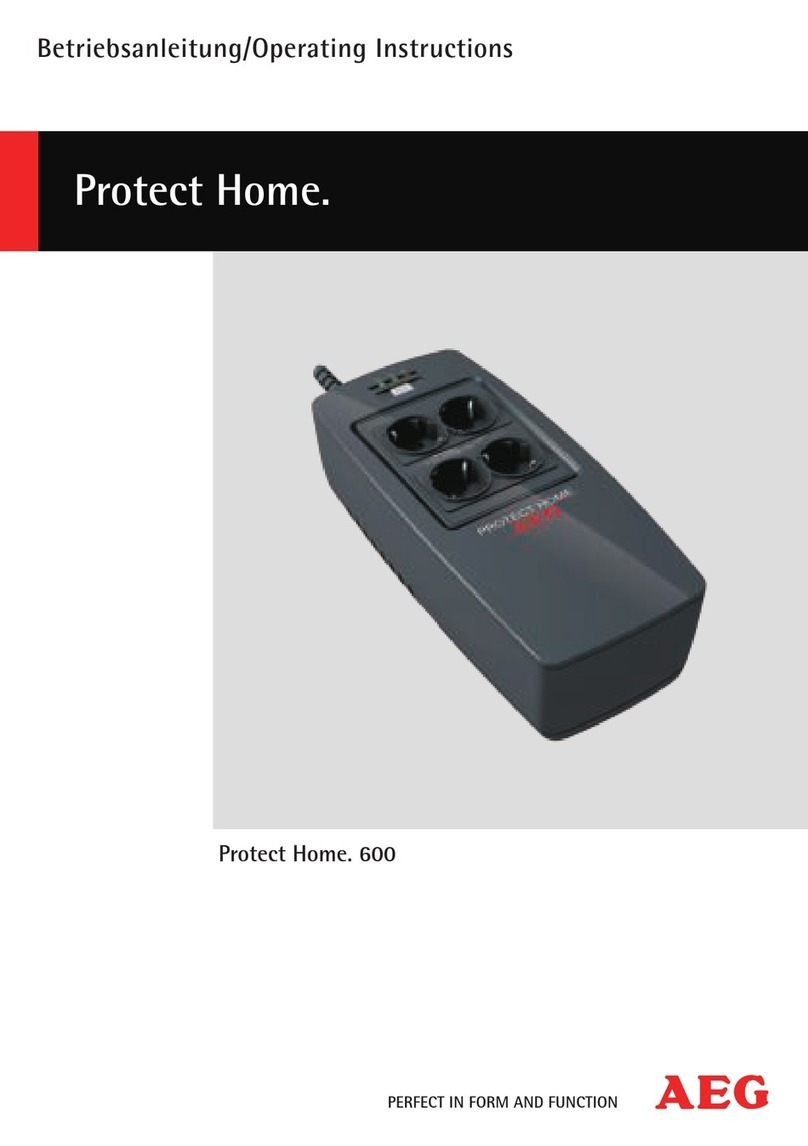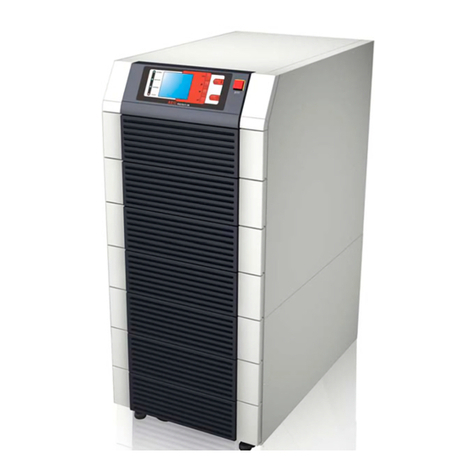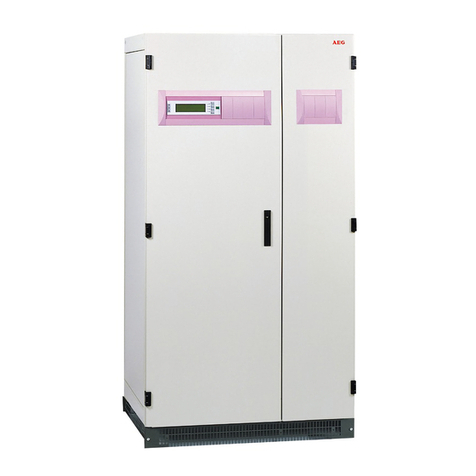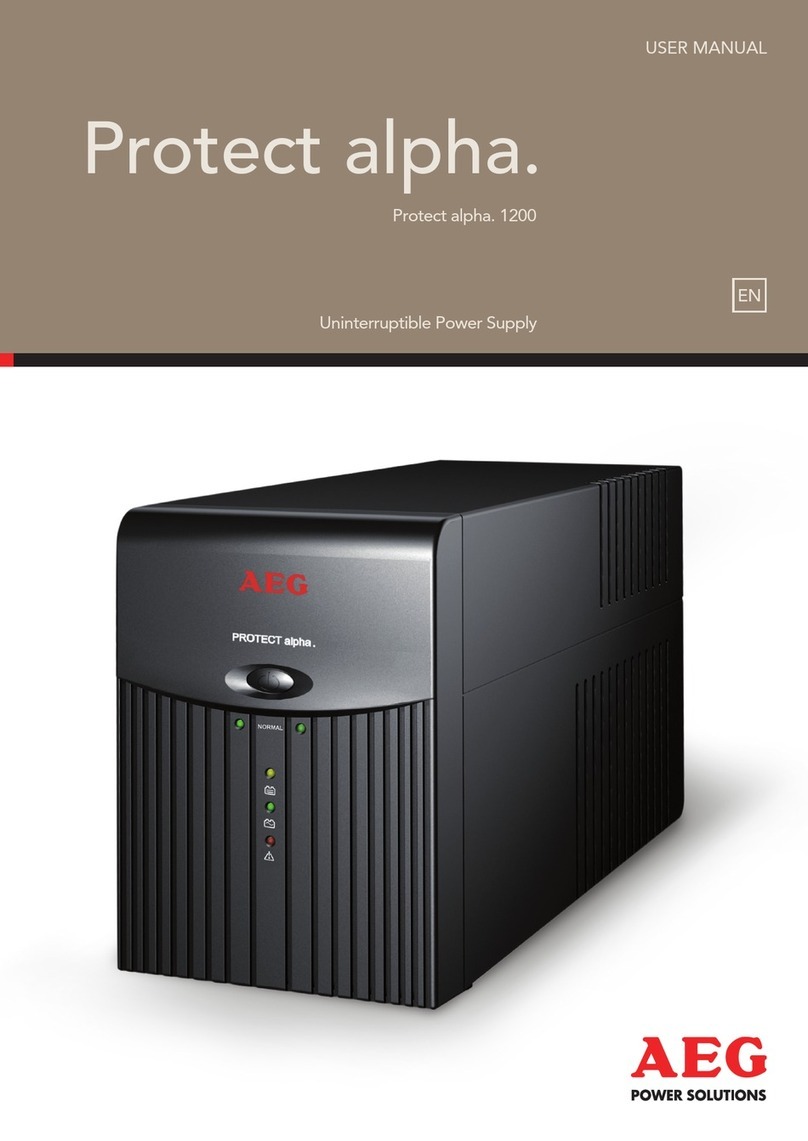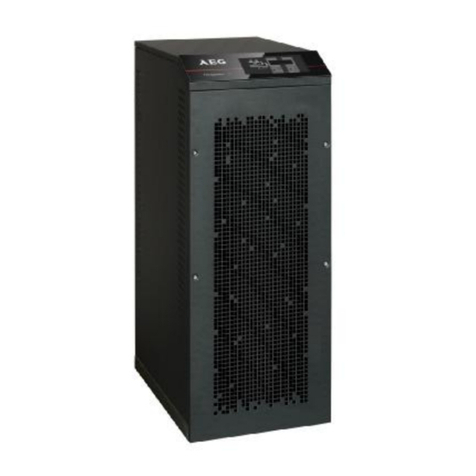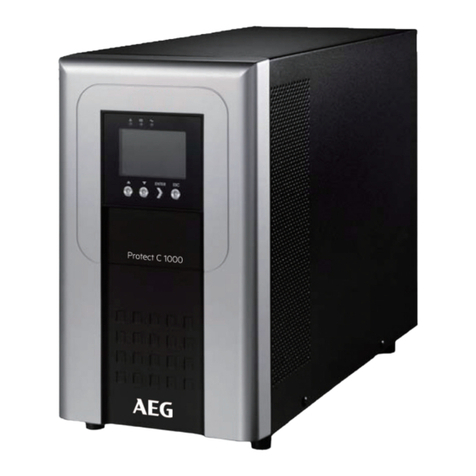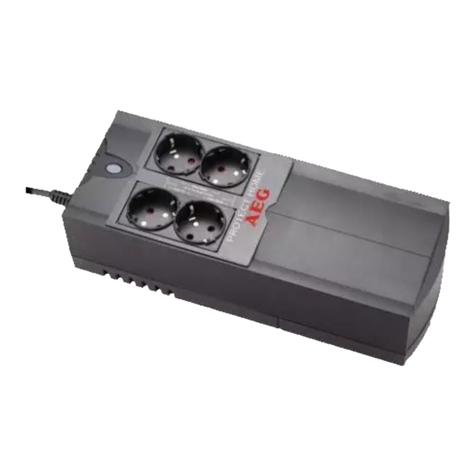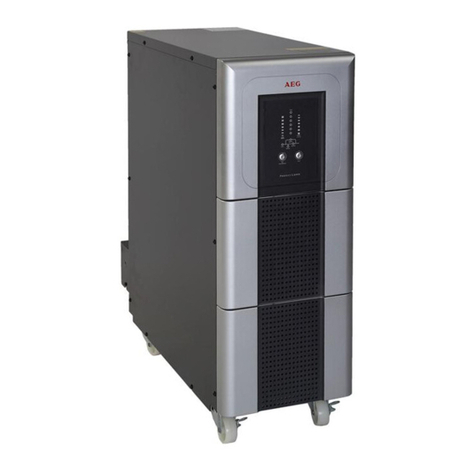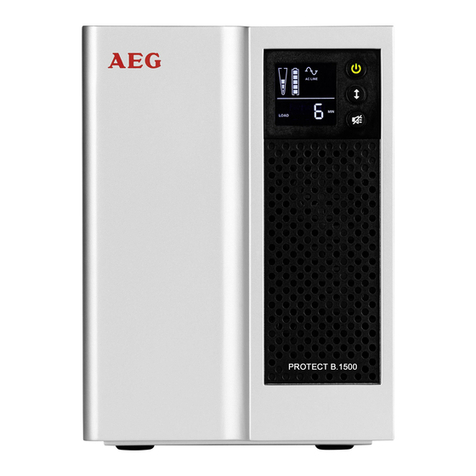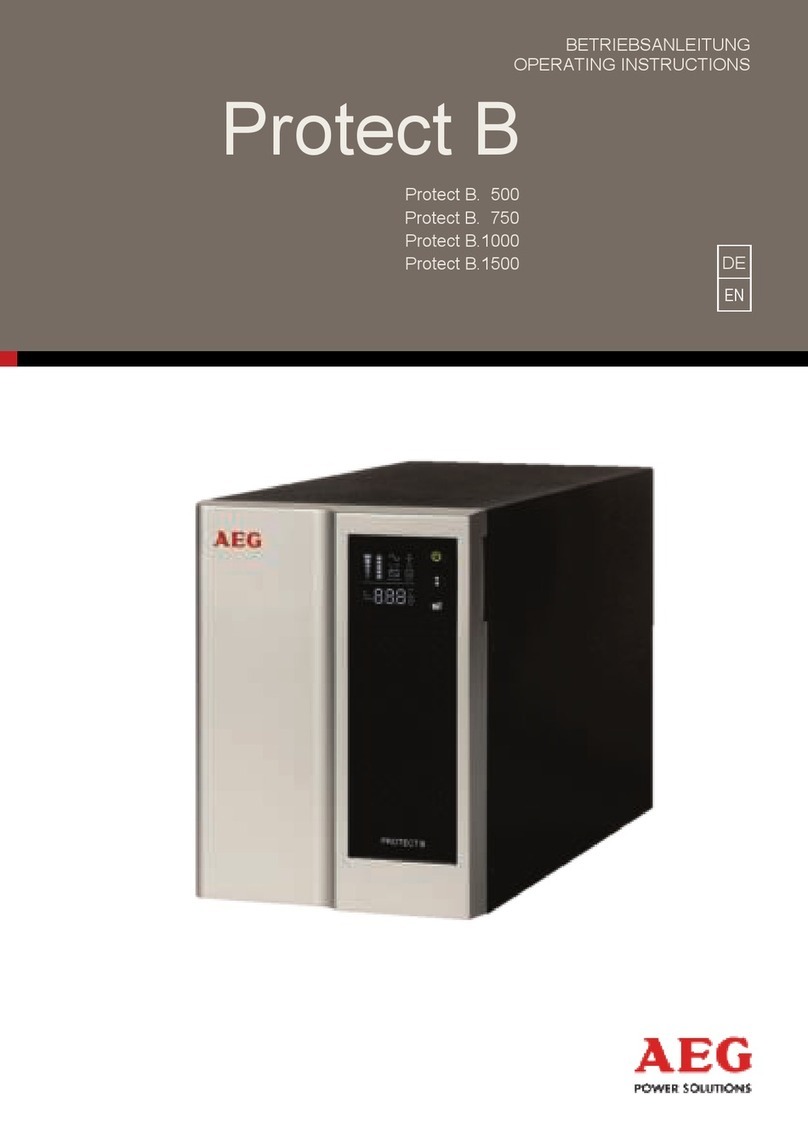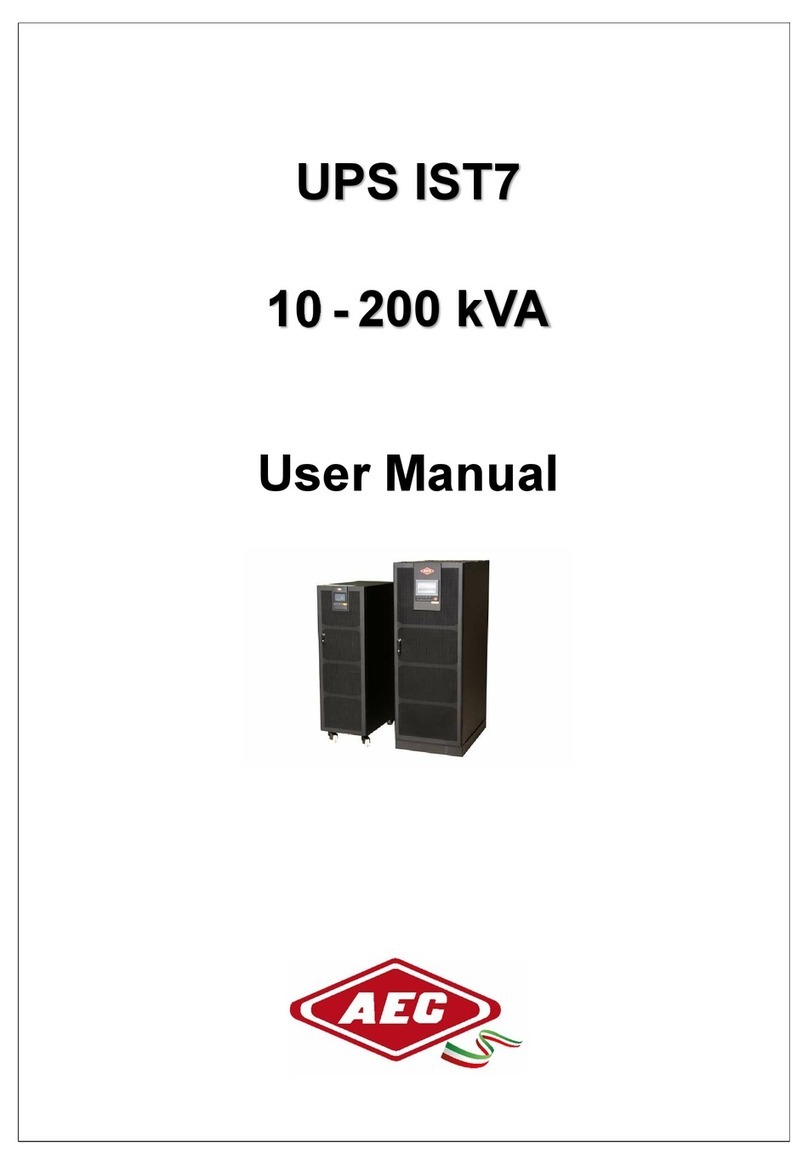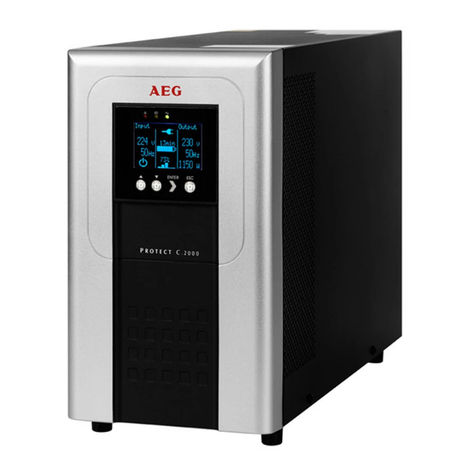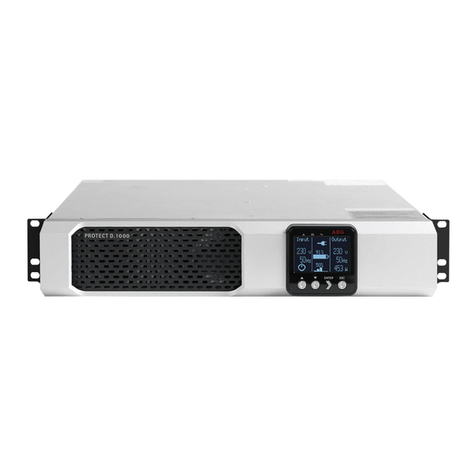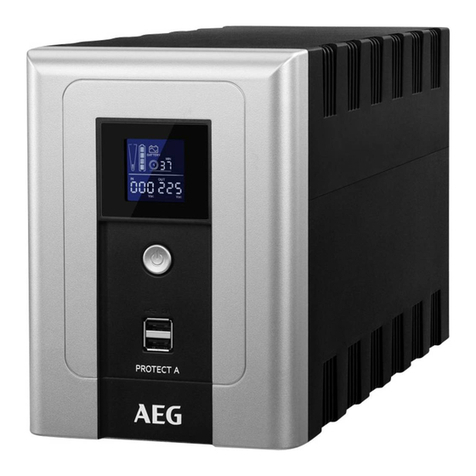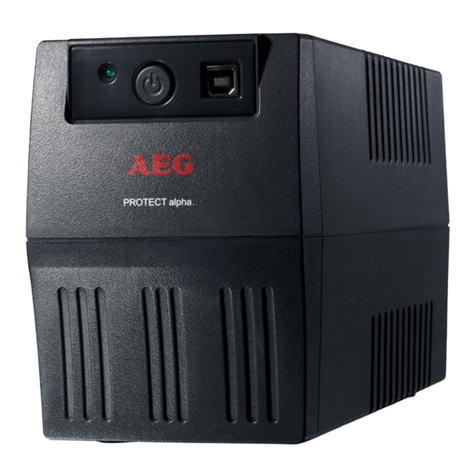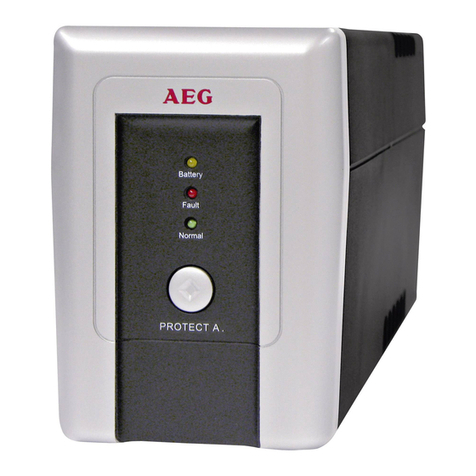
2.2 System Description
The UPS is connected between the public utility's mains and
the loads to be protected.
The power section of the rectifier converts the mains voltage
to DC voltage for supplying the inverter. The circuit
technology used (PFC) enables sinusoidal current
consumption and therefore operation with little system
disturbance. A separate, second rectifier (charging REC set
up using switch mode power supply technology) is
responsible for charging or trickle-charging the battery
connected in the intermediate circuit. The configuration of this
charging REC means the harmonic content of the charging
current for the battery is almost zero, so the service life of the
battery is increased even more. The inverter is responsible
for converting the DC voltage into a sinusoidal output voltage.
A microprocessor-controlled control system based on pulse-
width modulation (PWM) in conjunction with an extremely
quickly pulsating IGBT power semiconductors of the inverter
guarantee that the voltage system on the protected busbar is
of the highest quality and availability.
In the event of mains faults (e.g. current failures), the voltage
continues to be supplied from the inverter to the load without
any interruption. From this point onwards, the inverter draws
its power from the battery instead of the rectifier. No switching
operations are necessary; this means there is no interruption
in the supply to the load.
For safety reasons (as required by German standards, VDE),
the mains input in the unit will be disconnected by a two-pole
switch in the event of a mains failure. Energy backfeed to the
mains and voltage supply to the pins of the mains connector
are thus reliably avoided.
The automatic bypass serves to increase the reliability of the
supply further. It switches the public mains directly through to
the load if there is an inverter malfunction. As a result, the
automatic bypass represents an extra passive redundancy for
the load.
8



